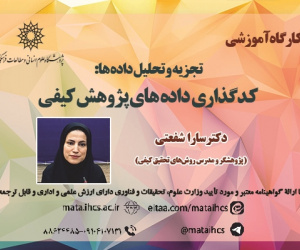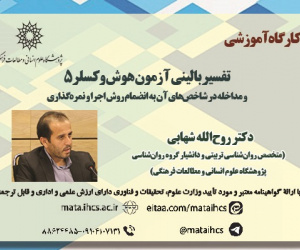بهبود دقت مکانی تصاویر حرارتی با تکنیک SFIM و T-Sharp-Dis-Trade جهت بررسی تغییرات دمای سطح زمین (مقاله علمی وزارت علوم)
درجه علمی: نشریه علمی (وزارت علوم)
آرشیو
چکیده
هدف: بررسی رابطه بین دمای سطح زمین و کاربری های شهری می تواند در مدیریت شهری مورد استفاده قرار بگیرد؛ اما یکی از مشکلات پیش رو، قدرت تفکیک مکانی پایین تصاویر حرارتی است. هدف این پژوهش، بررسی و انتخاب بهترین الگوریتم موجود با هدف دستیابی به توان تفکیک مکانی بالای تصاویر حرارتی برای بررسی و تحلیل تغییرات دمای سطح زمین در منطقه ۴ اهواز و کشف بهترین الگوریتم در این زمینه است. روش و داده: به همین منظور الگوریتم Split Window به عنوان یکی از متداول ترین الگوریتم های مناسب تعیین دما و الگوریتم T Sharp Dis Trade و SFIM در مناطق شهری به منظور بهبود قدرت تفکیک مکانی استفاده شده است. یافته ها: نتایج نشان می دهد که توان تفکیک مکانی تصویر خروجی حاصل از الگوریتم Split Window ، T Sharp Dis Trade و SFIM، به ترتیب برابر با ۳۰، ۱۰۰ و ۴۵ متر است. الگوریتم T Sharp Dis Trade توان تفکیک بسیار مناسبی برای تصویر خروجی نشان داد به گونه ای که بر اساس آن تفکیک کاربری های مختلف متناسب با دمای آن ها میسر شد. الگوریتم های Split Window و SFIM نتایج قابل قبولی در بررسی کاربری ها ارائه ندادند. همچنین میانگین دمای به دست آمده از الگوریتم T Sharp Dis Trade، Split Window و SFIM به ترتیب برابر با ۱۷/۵، ۲۳/۵ و ۲۸/۲۵ درجه سانتی گراد است. این تفاوت دمایی الگوریتم ها به دلیل اعمال فرآیند تلفیق است. نتیجه گیری: در نتیجه الگوریتم T Sharp Dis Trade در زمینه بهبود دقت مکانی تصاویر حرارتی موثرتر عمل کرد. نوآوری، کاربرد نتایج: نوآوری های پژوهش حاضر عبارتند از: استفاده همزمان سه الگوریتم ذکر شده با هدف افزایش توان تفکیک مکانی تصاویر حرارتی و کشف بهترین الگوریتم در این زمینه، که در تحقیقات قبلی تاکنون انجام نشده است، بهبود توان تفکیک مکانی تصاویر حرارتی برای ارزیابی کاربری های شهری با استفاده از الگوریتم T Sharp Dis Trade و بررسی دقیق تغییرات دمای سطح زمین است.Improving the Spatial Resolution of Thermal Images by using SFIM and T-Sharp-Dis-Trade Techniques to Investigate Land Surface Temperature
Aim: Investigating the relationship between land surface temperature and urban land uses can be used for urban management. However, one of the main problems in this field is the low spatial resolution of thermal images. This research aims to evaluate and select the best existing algorithm for achieving a high spatial resolution of thermal images to investigate and analyze changes in land surface temperature in Region 4 of Ahvaz.
Material & method: For this purpose, the split window algorithm was used as one of the most common suitable algorithms to calculate land surface temperature, and SFIM and T sharp DisTrade algorithms in urban areas were applied to improve spatial resolution.
Finding: Results show that the spatial resolution of the output image obtained by Split Window, T Sharp DisTrade, and SFIM algorithms is 30, 100, and 45 meters, respectively. The T Sharp DisTrade algorithm presented the output images with very good resolution so that different land uses could be separated according to their surface temperature. Split Window and SFIM algorithms did not provide acceptable results in land use evaluation. Also, the average land surface temperature values obtained from T Sharp DisTrade, Split Window algorithm, and SFIM are equal to 17.5, 23.5, and 28.25 degrees Celsius, respectively. This temperature difference of these algorithms is due to utilizing the fusion process.
Conclusion: As a result, T Sharp DisTrade algorithm was more effective in improving the spatial resolution of thermal images.
Innovation: Innovations of this research are: - simultaneous use of three mentioned algorithms for increasing spatial resolution of thermal images and discovering the best algorithm in this field, which has not been investigated in previous research, - improving spatial resolution of thermal images for evaluating urban land uses by using T Sharp DisTrade algorithm, and detail investigation of surface temperature changes.








